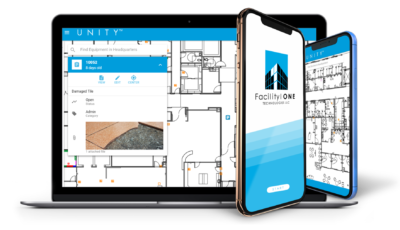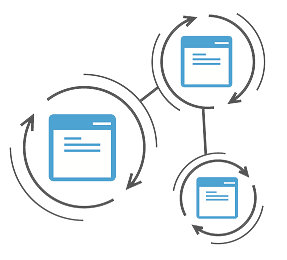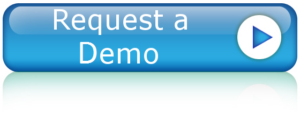5 Ways a CMMS Can Improve ROI for CCRC’s and Healthcare Facilities
When people think of the senior living industry, they think of the human element — doctors, nurses, residents. But what about the equipment, the facilities and the people who keep them running? This is the hidden realm of residential care equipment and facility management, and it costs CCRC’s hundreds of thousands of dollars a year. When the maintenance and operation of these assets is inefficient, those costs can increase exponentially.
Choosing the right Computerized maintenance management software (CMMS) for your organization can provide a solution to this problem. While it’s certainly possible for managers to orchestrate all the maintenance and repair tasks with systems like spreadsheets or work order software, FacilityONE’s CMMS takes the process to a new level of ease and efficiency. Not only will this type of business software improve the ROI of your facility in concrete ways, it will also improve the quality of service you provide to the most important people in your organization — the residents.
 What is CMMS?
What is CMMS?
CMMS at its most basic is software that computerizes maintenance management tasks. It aims to replace spreadsheets and other low-tech maintenance management solutions used by facility managers to organize their maintenance tasks. It offers modules on inventory management, maintenance scheduling, work order management, asset management, worker scheduling and more.
How Can CMMS Improve ROI for my Facility?
So CMMS manages equipment, inventory, and facilities — but what can it do for CCRC’s? Odds are, a solo practice won’t have much need for a CMMS system, but joint properties housed in large clusters, senior living campuses, and large hospital settings can all see many significant benefits from implementing a CCRC CMMS system.
Preventive Maintenance
The main perk of a CMMS system is its preventive maintenance features. Preventive maintenance is defined as any kind of routine maintenance that is performed to tune something up even when it isn’t damaged. For example, you get your oil changed every 5,000 miles, not when your engine breaks down.
CMMS offers a comprehensive schedule that lets users create asset profiles for each individual piece of equipment or space. Then they can assign specific maintenance tasks to those assets, track  whether tasks have been completed, and access detailed maintenance history of that asset. Users can also set maintenance tasks to repeat at set intervals, reducing the chances of forgetting to perform maintenance through human error.
whether tasks have been completed, and access detailed maintenance history of that asset. Users can also set maintenance tasks to repeat at set intervals, reducing the chances of forgetting to perform maintenance through human error.
By keeping on top of preventive maintenance in an organized fashion, the chances of unexpected equipment failure is drastically reduced. This saves you money in the long run by reducing early equipment failure and subsequent replacement which can be costly.
You also enhance the safety of your equipment by doing routine maintenance — no one wants to be caring for residents when the power goes out and the back-up generator fails unexpectedly because it wasn’t properly maintained. This also makes your facility more profitable by mitigating the chances for malpractice suits sparked by faulty machinery. Everyone wins when equipment is kept in tip-top shape.
Predictive Maintenance
Now let’s take the idea of preventive maintenance a step further. Predictive maintenance plans for the failures that preventive maintenance can’t stop. Using condition-based monitoring, predictive maintenance gathers equipment data and analyzes trends to identify pain points and forecast failures. It also helps reduce costs by allowing users to replace parts on an as-needed basis rather than on a schedule.
For example, remember that generator mentioned above? Instead of using preventive maintenance to replace a part that hasn’t been changed in a while and might need it, CMMS can allow technicians to monitor the condition of different elements of the machine and only replace them when they are beginning to show signs of wear. This saves money by reducing unnecessary parts replacement but still keeps residents safe by alerting you when an asset needs attention.

Work Order Tracking
Maintenance is performed and executed through work orders, and CMMS streamlines this process in big ways. First, it digitizes the process — technicians simply log in, view the work orders assigned to them and perform their tasks. Once a task has been completed, they can send it along to an admin for approval, if that’s part of your process. This holds workers accountable for the specific tasks they are expected to perform, improves visibility of all tasks in the queue for managers and eliminates the need for micromanagement.
Second, work orders improve ROI by increasing the efficiency of your maintenance crew. Work that is organized can be completed much more quickly, and by tracking the number of work orders in real-time, managers can make decisions about how much staff is required to complete them. This helps prevent over-staffing and under-staffing, saving you money on overtime and man-hours.
Inventory and Security Protocols
Do you know what your facility can’t afford? Fines for improper facility management. CMMS deals with this issue through detailed maintenance records. CCRC’s and hospitals are subject to a huge list of government, health and safety regulations in order to ensure their patients’ well-being. CMMS ensures that every piece of equipment, every vent and duct, every room that requires cleaning has an organized record of when maintenance was last performed. This ensures you are prepared for performance audits, inspections and other liability issues.
This includes inventory management. Healthcare facilities of all sizes contain an enormous supply of medications and medical supplies that are easily (and frequently) abused. CMMS lets managers track inventory movement and restrict access to sensitive substances. If inventory does go missing, it can be discovered quickly and is more likely to be traced back to the offenders. This protects your facility from lawsuits, prevents loss of money on lost products and keeps medical substances off the streets.
Patient Satisfaction
The least obvious way CMMS can improve your healthcare facility’s ROI is through increased patient satisfaction. This metric doesn’t necessarily have a dollar amount associated with it, but the impact is significant. When every element of your facility runs smoothly, patients feel it. Whether you’re using an advanced CMMS system that can automatically adjust the temperature to keep them comfortable or a basic one that ensures enough wheelchairs are available to transport a patient home, the benefits of a reliable maintenance system can make all the difference in how a patient experiences their stay.
Final Word
A robust CMMS like FacilityONE offers a range of maintenance and labor management features that can save you money in surprising ways. From improving your equipment lifespan to streamlining maintenance work, CMMS can enhance every aspect of your facility, inventory and equipment management. It makes it easier for you to focus on what really matters — maintaining a safe environment and treating your patients.

